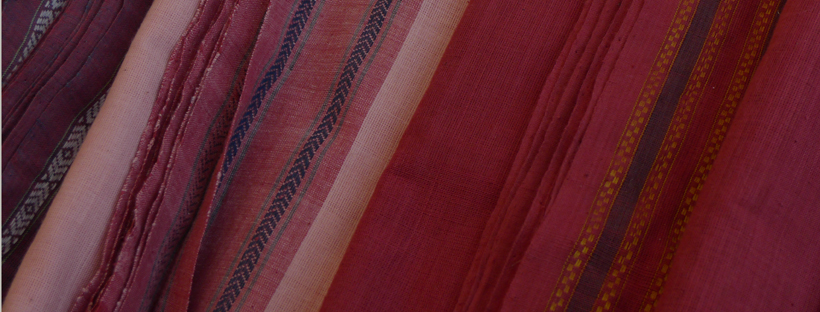You may not be much of a fashionista in your day-to-day life… but when packing for your first ever trip to India, the question is bound to come up and leave you scratching your head in confusion! This is probably more true for women, so be warned that most of my below observations may be more relevant to those identifying as women.
If you’re planning a trip to India, people may already have told you about how to dress appropriately. However, some of this well-meaning advice seems counterintuitive when you look at the climate charts. So I’m going to look into two aspects of this: the much talked-about cultural notions of what’s appropriate, including how you might personally feel about those, as well as the sometimes neglected question of what’s appropriate for a particular climate.
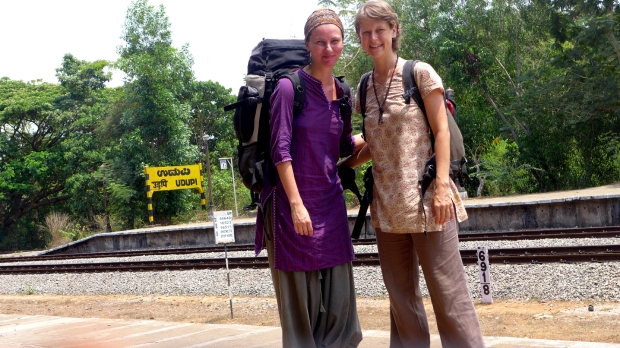
Dressing for physical comfort
Let’s first talk about the question of climate, which is of course equally relevant for all genders. Chances are that if you’re from a temperate climate and haven’t lived in the tropics or subtropics before, your instinct tells you to wear less the hotter it gets. And it’s true that while sitting in the breezy shade on a hot day, bare skin feels cool and liberating. At the same time, long and loose clothing becomes vital the moment you’re exposed to strong sunlight. You’ve probably noticed how traditional clothing styles from the Western Sahara to the Middle East emphasize full cover; something that is counterintuitive to the sun-craving central European, but very easily understood once you spent some time exposed to the South Indian mid-day sun in a city devoid of trees.
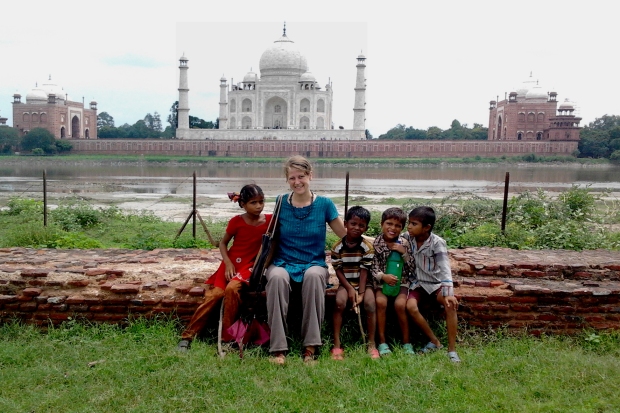
On the opposite bank of the Yamuna river behind the Taj Mahal in Agra, wearing one of my most comfortable kurtas.
Whether you’ll want your jeans depends on the time of year and the places you’re going to visit. In winter up in the mountains of the Himalayas or the Western Ghats, or even in Hyderabad where winter nights drop to 15°C, a pair of jeans can come in handy if you’re going to be outdoors after dark or in air-conditioned environments a lot. At night, jeans also have the advantage that mosquitoes don’t bite through them easily.
Dressing for cultural comfort
The other aspect of comfort is what makes you feel comfortable in a specific cultural context. Talking about cultural appropriateness, the question gets a lot more nuanced, and more gender specific. For instance, people say that it’s best to keep your shoulders and legs covered in India, especially for women. But I found that these rules depend strongly on the situational and specific cultural context. For instance, if you are walking around in Bandra in Bombay, go to a fancy club or pub, or are at a friend’s place, chances are you’ll be perfectly comfortable in whatever you would normally wear back home in summer. However, if you’re going sightseeing or shopping in Hyderabad’s old city centre you’ll definitely want something significantly less revealing.
Part of the comfort I’m talking about is simply being stared at; depending on where you are, you might already draw attention simply by looking like a foreigner. You may not want to add to that discomfort by wearing something that people find odd at best, and vulgar at worst. This includes both stares from men that might make you feel uncomfortable or even harassed, as well as stares from local women who may disapprove, thus increasing the perceived distance between them and you.
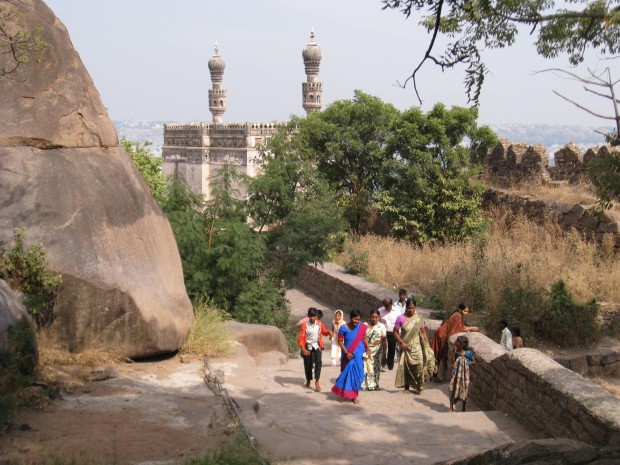
An Indian family visiting Golconda Fort in Hyderabad. Photography: Nina Osswald
The other part is the image you create in people’s heads about foreigners. Whether we like it or not, to some extent we’re always ambassadors of our own culture when visiting new places, especially vis-a-vis communities of people that have not had the opportunity to interact much with people from other cultural backgrounds. It’s one thing hanging out with educated, well-travelled Indian friends, and an entirely different thing visiting rural areas or a place of worship. It’s up to our responsibility as travellers to be sensitive to the differences and pick up nuances of context before causing offence, or making ourselves ridiculous. If you want to dress appropriately for the context and occasion, there won’t be a way around developing a sense for what the context calls for. Different places, different parts of the same city, and different times of day and occasions call for vastly different styles and levels of modesty in dress.
Practical packing suggestions
So what does all that mean on a practical level? What am I actually gonna wear?? Here are some basic rules for travel packing:
- Pack lightly: Bring only what you really need, and what you enjoy wearing and are therefore likely to wear a lot.
- Leave some space: In fact, pack somewhat less than what you actually need, because you’ll definitely want to pick up some lovely Indian clothes along the way. The less you carry, the more space you’ll have for those new things 🙂
- Perfect matching: Both from a cultural and practical perspective, it’s best to be equipped with flexibly matchable sets of clothes for different contexts and occasions; consider this for the things you bring as well as the ones you buy along the way.
A practical suggestion: Have one or two long (below the bum), modest and loose-fitting outfits for outside in the sun, but a sleeveless top underneath so when you go inside, for instance at a friend’s place where you are at ease, you can take off the long sleeves. Note that by sleeveless I don’t mean the very revealing spaghetti type, but something broader, not too tight. In less conservative environments, sleeveless tops are fine to wear outside, and you will in fact find lovely sleeveless or mini-sleeve kurtas in many handloom garment shops. Long sleeves are not culturally necessary at all, but I find them crucial to protect the lower arms from the sun, especially when walking or cycling around a lot. Sun-screen gets you only so far especially in mid-day. Unfortunately, it’s surprisingly hard to find women’s kurtas that are full sleeve rather than 3/4; so I have a few of those from home, got some stitched, and one of them is actually a boy’s size kurta from daaram (it’s not your typical feminine-style kurta but works just fine for me).

Customs may indeed be a little less strict at the beach, a fact that this tourist in a South Indian fishing villlage seems to be taking full advantage of. Photography: Nina Osswald
While in Bombay, I often wore below-the-knee skirts and sleeveless tops walking around in daytime in Bandra. I did the same thing only once in Hyderabad, and not even in a particularly conservative neighbourhood, but it felt quite awkward. I once went to a nightclub at a five star hotel in Hyderabad, and the two couchsurfing travellers who were with us wore what they would normally wear in the street – loose salwar pants and a long kurta. They were hands down the most prudishly dressed people in the whole club.
The difference is of course that the Indian women you see in daytime on the bus are not the same girls you see in a five-star hotel club. As travellers, we don’t just travel to India, we easily travel between worlds. Eating at street corner tiffin places, commuting by bus and walking in daytime but visiting a club at night. Ask the average girl in that nightclub whether she ever took a bus; or ask the average girl on the bus whether she has heard of that club, and you’ll find out what I mean. For me, both the bus and the five-star were just part of a new experience; for many locals, they are worlds apart. This is of course not to say that it works in such a binary way for all Indians; but these are observable cultural tendencies.
So for us as travellers, there will always be a conflict between wanting to adapt to the local culture and wanting to rebel against regressive and socially oppressive norms. Like it or not, as a visitor from a culture about which many of the people you meet in the streets will know little other than stereotypes, it’s best to not reinforce those stereotypes. For me, it has become less about conforming to anyone’s rules than to be accepted and respected by people from a very different cultural background. I have in fact found it an important learning to let go of the notion that I always have to rebel against cultural norms just because they are there – up to a certain point. Where that point is has to be a highly personal decision for each of us. The ad in the below picture shows that for many, even admitting to the fact that we are mammals might constitute a daily act of rebellion…

“No show-through” bra ad in Bangalore. Photography: Nina Osswald
A shawl or dupatta is extremely handy for wearing when outside and taking off when you get hot or are in a more relaxed place. And it’s indispensable for another practical problem you’ll be faced with: severe cold. I’m talking, of course, about the obsession with air-conditioning and the inability to adjust the temperature to a comfortable level instead of going full-blast. From taxis to offices, malls and airports, you’ll find yourself in situations where you’ll wish you had a warm jumper and shawl. The fashion among Indian women for knitted (rather than woven) churidars – unbearably hot outside in day-time – becomes understandable once you’re forced to spend some time in one of these human-made people fridges.
Even when there is no AC, wind and drafts have a positive cultural connotation in India, so you’ll often find yourself exposed to fans turned up to extreme levels, so having a shawl handy can save you at least from some of the draft, if not the noise. Shawls are among those things you’d better not bring from home though, because you’ll be so tempted to buy more of them than you’ll ever need anyway…!
One thing that is generally looked down upon is scruffiness. So depending on how much punk or hippie you normally are, you might want to keep yourself a little more well-groomed, and your clothes a little cleaner and less worn-out than you might be comfortable with at home. This is again true regardless of gender, even as a man you will be more respected if you take some care to look decent.
Of course, sometimes you just get stared at, no matter what you’re wearing…
As far as your safety is concerned, I very much doubt that the way you dress will have much to do with it. A reassuring and sad fact is that in India, like in most other countries, most violence against women happens in the home; and to those of underprivileged backgrounds. That is not to say that you should be reckless. It’s not advisable, whatever your attire, to walk around alone at night in an unfamiliar area or take a taxi to a remote place on your own. But as a traveller, you’re clearly not anywhere near belonging to the most vulnerable groups of women in India. So for you as a traveller, it is generally that much easier to get away with breaching local dress customs without much risk for your personal safety. Keep that in mind before looking down on local women anywhere in the world for dressing modestly or prudently. You have to make your own choices along the continuum between supporting local women in solidarity by adapting to local styles, or gently bringing in new ideas by sticking to your own cultural styles. Keep in mind however, how differently it may come across if you challenge social norms in your own society as compared to one where you are perceived only as a passing visitor.
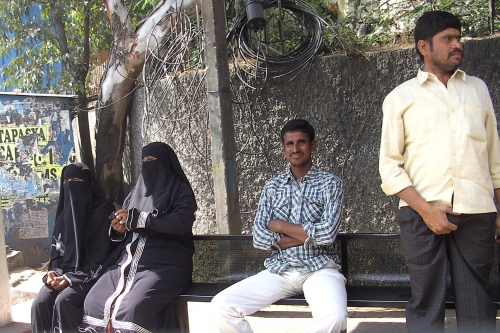
Who rules the world? Sad example of male appropriation of public space at a bus stop in Hyderabad. Photography: Nina Osswald
Shopping for sustainable clothing in India
The most iconic and traditional piece of Indian clothing is perhaps the sari. It must certainly be the largest…! I much hope for you that you’ll get invited to a wedding or some other important function, so you’ll have an occasion to get yourself a beautiful, elegant handloom sari. Of course you could wear one any day, anywhere, but without much practice you may not find it very practical on a daily basis. Speaking of practicality, it’s interesting to note that the sari was originally intended to be a one-piece unstitched woven garment, worn without blouses or petticoats.
Generally, you will want your clothing for daytime to be woven rather than knitted, as this is much cooler on the skin. It’s a good thing that India has so many beautiful and sustainable handloom fabrics! Since you may not want to support GMO cotton farmers, large mills and garment corporations and chemical dye manufacturers, here are a few examples of sustainable clothing brands and fabric makers to guide you in your shopping spree for your new ethnic style:
Some of these styles, like the more floral Malkha saris, took me a bit of getting used to, as they may not be what you typically think of in terms of Indian clothing – no loud colours, silver or gold threaded borders, elephant and paisley prints, and so on. But they really grew on me, and the fact that these fabrics have a story behind them (rather than a factory and a sweatshop) make them all the more lovable!
So good luck with your travel shopping, and post your personal experiences with dressing and travelling in India below!
Further Reading
http://theladiesfinger.com for instance this article about Travelling Alone in India or this video about Women’s Rights in India
http://www.thealternative.in/lifestyle/survey-solo-travel-or-nothing-it-is-say-women/
http://www.huffingtonpost.co.uk/priya-shetty/india-travel-women_b_6767514.html
https://timesofindia.indiatimes.com/india/Travelling-solo-a-hit-among-women/articleshow/46489073.cms
https://breathedreamgo.com/my-top-tips-for-women-travelling-in-india/
https://www.theguardian.com/world/2016/aug/29/india-female-tourists-skirts-safety-advice
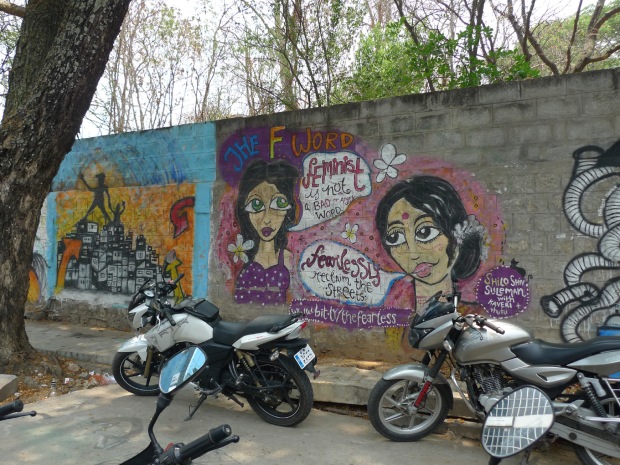
Feminist wall paintings in Bangalore. Photography: Nina Osswald
